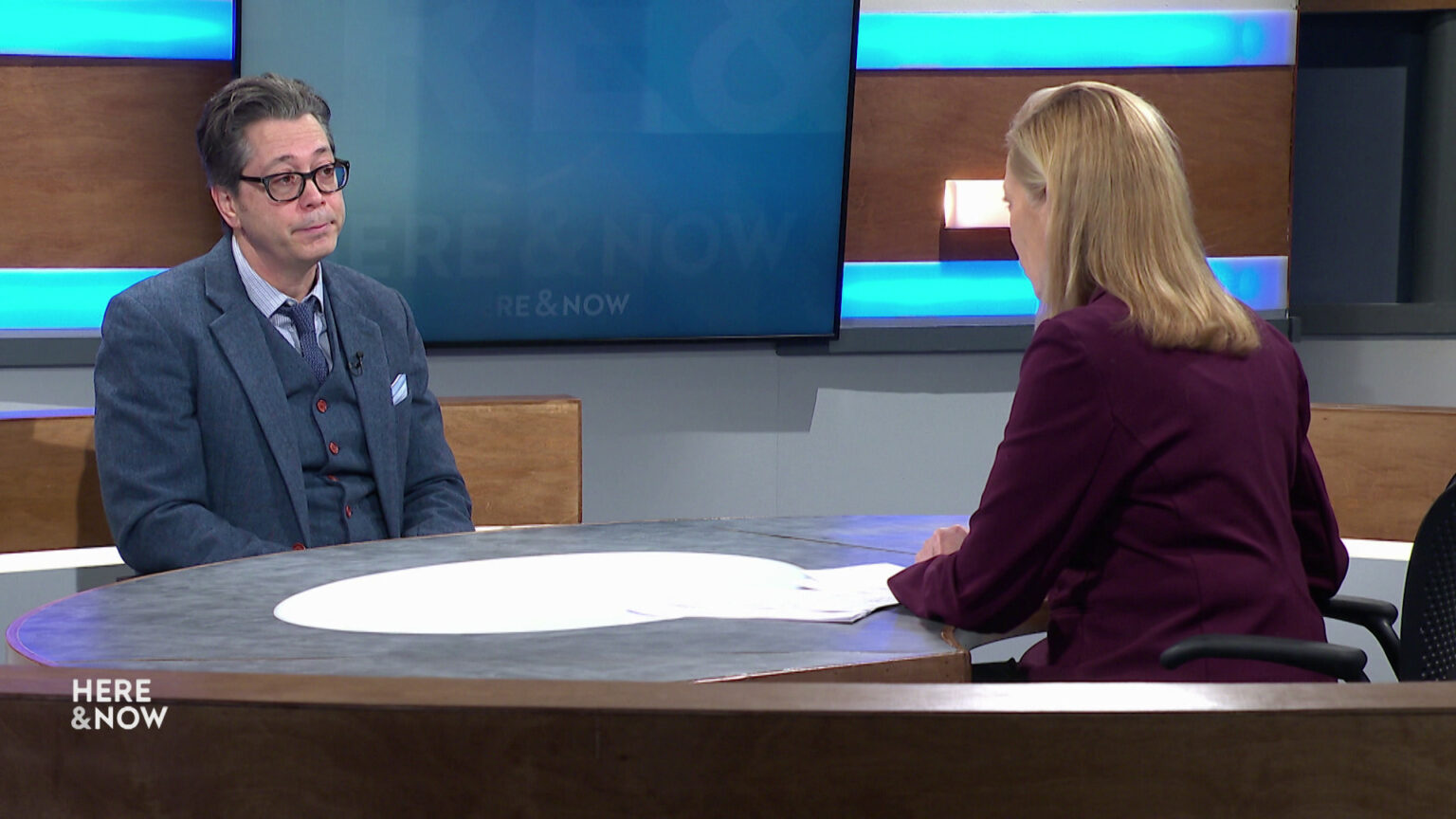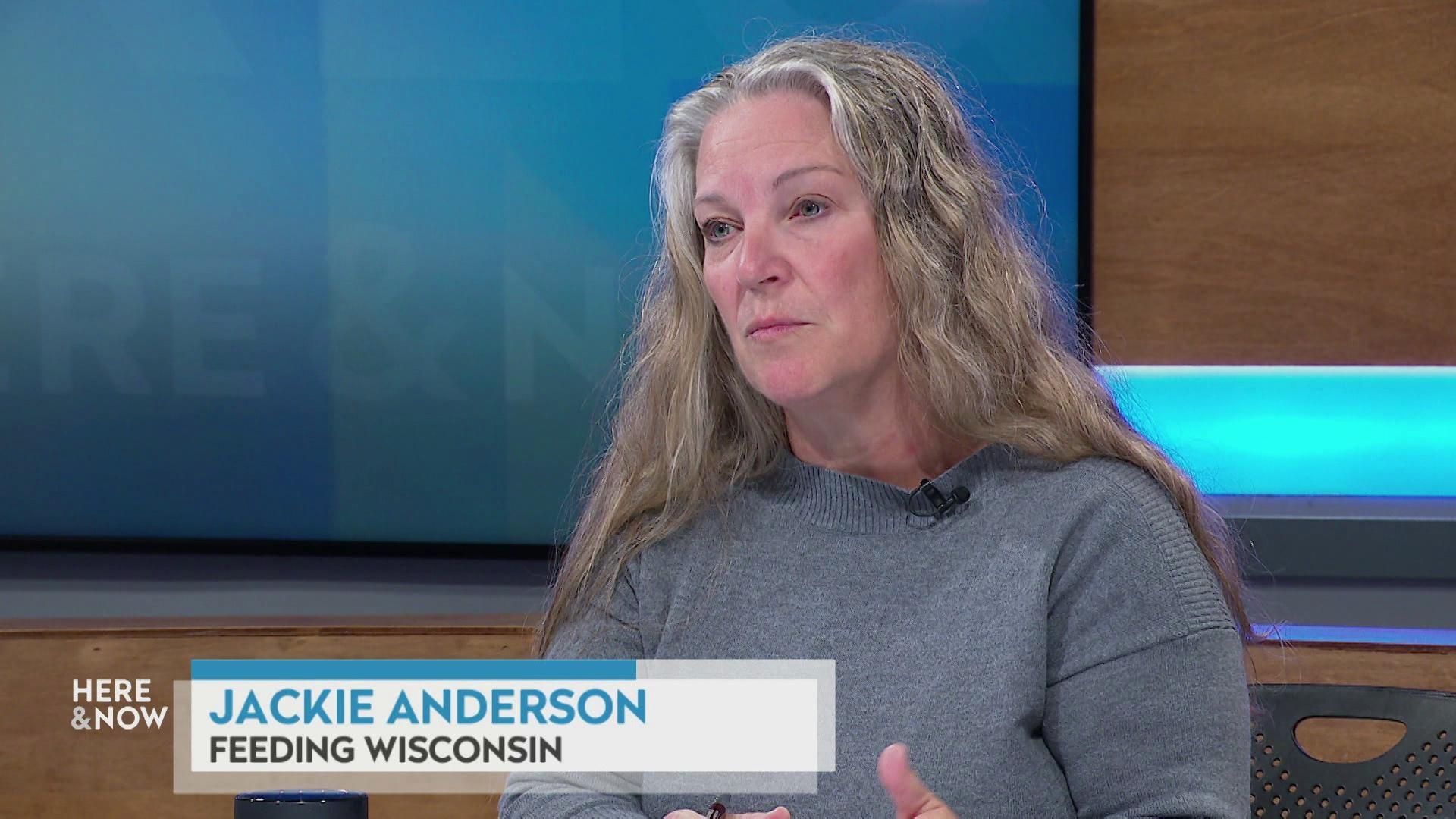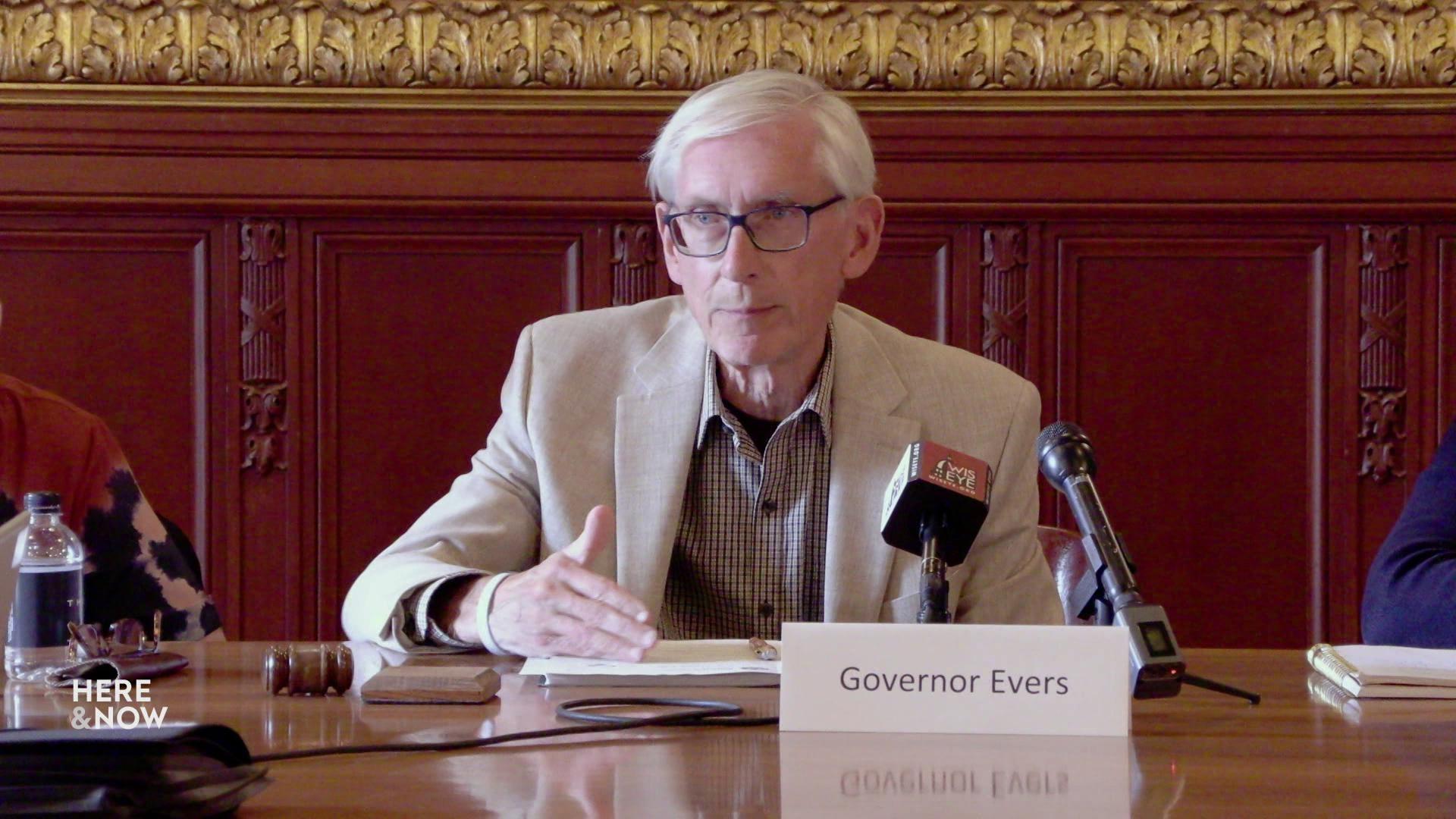'Here & Now' Highlights: Chad Alan Goldberg, Bobby Peterson, David Minor, Dale Knapp
Here's what guests on the Jan. 10, 2025 episode said about what drives support for President-elect Donald Trump, the removal of medical debt from credit reports, how Eau Claire is faring one year after hospital closures, and Wisconsin's projected population drop-off.
By Frederica Freyberg | Here & Now
January 13, 2025

Frederica Freyberg and Chad Alan Goldberg (Credit: PBS Wisconsin)
Research tracking the political popularity of President-elect Donald Trump by sociology professor Chad Alan Goldberg has found supporters of the are drawn to messaging about threats to their social status more than inflation or immigration. The outgoing Biden administration is erasing medical debt recorded on consumer’s credit reports, and public interest attorney Bobby Peterson said the change will remove a barrier that prevents people from buying houses or cars and even getting jobs. After two hospitals and nearly 20 medical clinics in the Chippewa Valley shut down, the Eau Claire Area Chamber of Commerce formed a recovery task force to address healthcare access — its president and CEO David Minor said a lot of gains have been made since the closures. A state report projects Wisconsin will see significant population loss over the next 25 years, and Forward Analytics Director Dale Knapp said low birth rates and increasing mortality among baby boomers are contributing factors.
Chad Alan Goldberg
Professor, UW-Madison Department of Sociology
- A sociologist and author, Goldberg’s current research includes testing three theories to find which motivation most sways voters to support President-elect Donald Trump: economic populism, political alienation and threat to social status. This research has found the third stands out, with feelings that one’s status is threatened marked by racism, sexism, xenophobia and cultural traditionalism, according to Goldberg.
- Goldberg: “The theory that we found the most support for is the status threat theory. So, we looked at indicators of status threat in the survey data. So, for example, people who, say, who asked the question, ;Do you agree with the statement that cultural racial diversity is important for America?'”
Bobby Peterson
Executive director, ABC for Health
- On Jan. 7, the Biden administration announced a new federal rule through the Consumer Financial Protection Bureau that removes medical debt from the credit reports, a change that affects about 15 million Americans and nearly 400,000 people in Wisconsin. This change would erase some $49 billion dollars in medical debt from credit reports nationally, and more than $730 million in Wisconsin. That medical debt can prevent consumers from buying a car or house. Peterson calls credit reporting of medical debt an “electronic debtors prison.”
- Peterson: “If you think about it, in the old days, you didn’t pay your bills,, they locked you up and threw you in prison until you paid your bills. Today, it’s a situation where you have electronic handcuffs on — an electronic debtors prison. That’s your credit score. If your credit score doesn’t meet the certain metrics that people want, you can’t get a car, you can’t get an apartment. You can’t get a job sometimes. And so it really is an electronic debtors prison that traps people, sometimes in poverty. By eliminating medical debt from this equation, I think it can lift a lot more people out of this electronic debtor’s prison and give them an opportunity to move forward to get credit, apartment jobs, things like that. I mean, the estimates are that people’s, by removing medical debt from their credit scores, could raise their credit score by up to 20 points.”
David Minor
President and CEO, Eau Claire Area Chamber of Commerce
- At the start of 2004, HSHS Sacred Heart Hospital in Eau Claire and HSHS St. Joseph’s Hospitals in Chippewa Falls announced they would close along with Prevea clinics in the region. A proposal to provide $15 million dollars from the state to shore up health care access in the face of this loss of providers has been tied up in political fights. Since the closures, however, Minor said many medical institutions have rushed to fill the void – jump-started by the Chamber’s recovery task force implemented soon after the hospitals and clinics pulled out.
- Minor: “Once we stepped up the task force, Mayo Clinic, Marshfield Clinic, Oakleaf Clinic, they really took on the brunt of trying to absorb as much as they can. And again, we knew going into that that there was no way they could absorb all of it. But once we had a handle on what they could do and the expansions of their work, then we tried looking at other entities, other businesses that could come to the area and start to fill in some of those other pieces. So, it’s been a slow process. It’s still happening as we talk. We certainly haven’t recovered fully, but we’re in a good shape overall, I would say — but still, a lot of work yet to be done.”
Dale Knapp
Director, Forward Analytics
- A Wisconsin Department of Administration projection has found the state will see a population decrease of about 200,000 residents by 2050. Knapp said the implications of such a decline includes school funding, which is based on enrollment, and an ongoing lack of workers, especially in rural and tourist-heavy areas.
- Knapp: “The baby boomers — that demographic is one of the drivers that they’re now entering their later years. But really, the big two drivers of this population decline that we’re now beginning to see is the lack of babies. We’ve seen the number of births drop every year, but since 2007, the birth rate in 2023 were the lowest since 1942. That’s one. And then the other piece is, the other component is migration. We saw big net migration into the state into the 1990s, and it’s lagged ever since. When you have the demographics that we do, kind of baked into our future growth or no growth, you need migration into the state to fill those gaps, and we’re not seeing that.”
Watch new episodes of Here & Now at 7:30 p.m. on Fridays.
 Passport
Passport











Follow Us